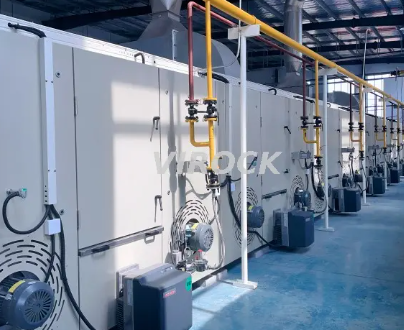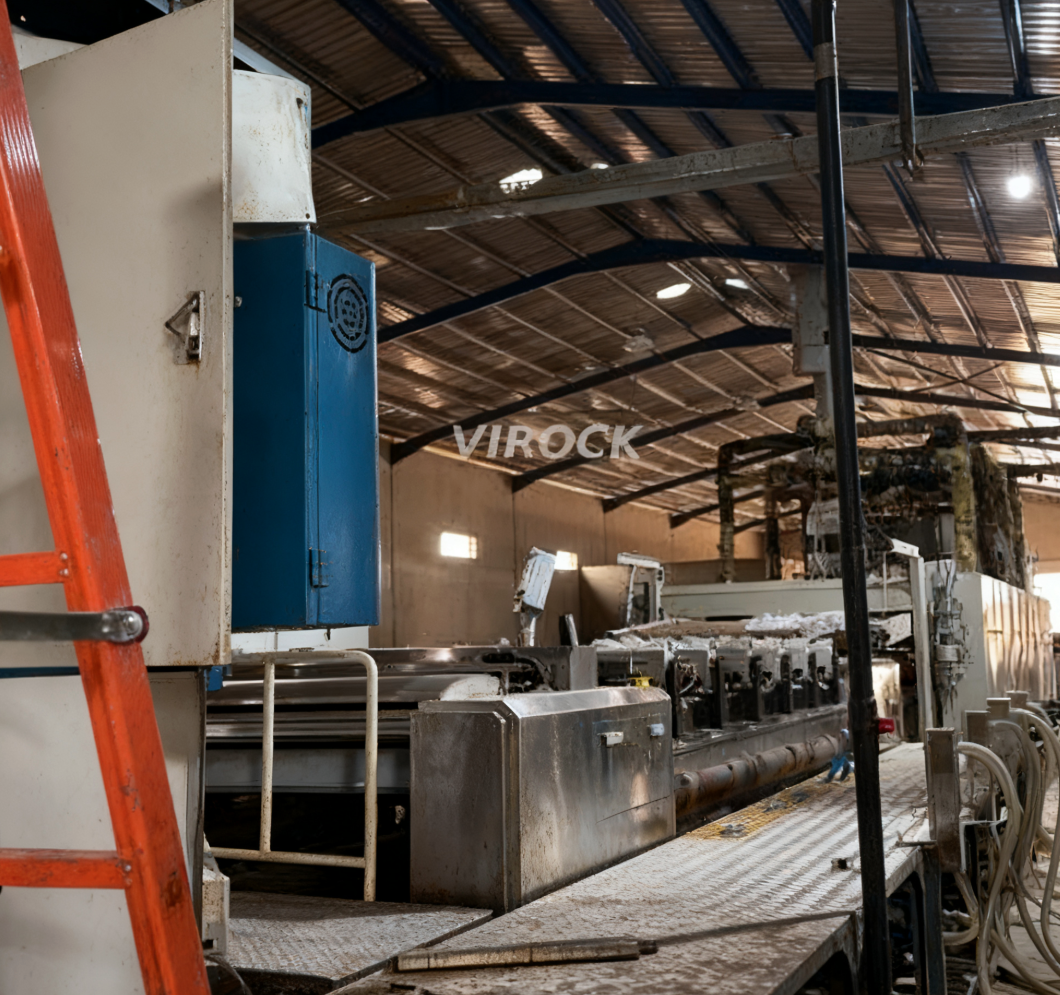Views: 0 Author: Site Editor Publish Time: 2025-10-27 Origin: Site








Textile finishing is a critical stage in fabric production, transforming raw, unprocessed cloth into high-quality materials suitable for clothing, home textiles, and technical applications. The textile finishing process enhances appearance, feel, performance, and adds specialized functionality to fabrics. Whether it’s improving softness, brightness, or making fabrics waterproof, fire-resistant, or anti-bacterial, finishing is what turns greige cloth into a desirable, market-ready product.
In this guide, we’ll explore every aspect of textile finishing, from preparatory treatments to advanced functional finishes, machinery used, and emerging trends in the industry.
Textile finishing can be divided into mechanical (physical) and chemical methods. Finishes can also be grouped based on their purpose: basic, aesthetic, or functional.
Mechanical finishes alter the physical structure of fabric or yarn to improve its surface, texture, or drape. Modern textile finishing machines for the garment industry make these processes more efficient and consistent. Common mechanical finishing techniques include:
Calendering: Uses heated rollers to flatten and polish the fabric, enhancing luster.
Embossing: Creates raised designs using engraved rollers.
Sanding / Fuzzing / Raising: Adds softness, warmth, and visual texture.
Shearing: Trims protruding fibers for uniformity and smooth appearance.
Polishing and Glazing: Improves sheen and tactile quality.
Chemical finishes are used to enhance durability, performance, and specialized functions of textiles. Advanced textile finishing machines for garment industry allow precise application of chemical finishes for consistent quality. Examples include:
Softening: Applying chemical agents to reduce fiber friction.
Flame Retardant Finish: Reduces flammability.
Waterproof or Water-Repellent Finish: Protects fabrics from liquids.
Anti-Bacterial and Anti-Moth Finishes: Improves hygiene and storage life.

Textile finishing is a critical stage in fabric production that transforms grey cloth into a finished, consumer-ready material. Through a combination of mechanical and chemical treatments, textile finishing improves appearance, texture, durability, and specialized performance. The process can be broadly divided into preparatory treatments, appearance-enhancing finishes, and functional finishes.
Preparatory treatments are essential to prepare the fabric for subsequent textile finishing processes. They remove impurities, stabilize fibers, and enhance fabric receptivity to dyes and chemicals:
Burling and Mending: Newly woven fabrics may contain burrs, loose threads, knots, or minor weaving defects. Burling removes these imperfections, while mending repairs tears, broken yarns, or missing warp/weft, ensuring a flawless base for further finishing.
Scouring: Scouring chemically and physically removes oils, waxes, dirt, and residual sizing from fibers. It improves absorbency, allowing dyes, bleaches, or other chemical finishes to penetrate evenly.
Bleaching: Bleaching eliminates natural pigments and residual contaminants, enhancing whiteness. For cotton and other cellulose fibers, oxidizing agents like hydrogen peroxide are common, while wool may use mild acidic or reducing agents.
Mercerization: Cotton and cotton blends are treated with caustic soda under tension, which increases fiber swelling, improving luster, tensile strength, and dye affinity. Mercerization also enhances the effectiveness of subsequent textile finishing treatments.
Drying: Excess moisture is removed using mechanical methods like centrifuges, vacuum rolls, or by passing the fabric through heated dryers. Proper drying ensures uniformity and prevents harsh hand-feel or shrinkage.
Appearance-focused finishing enhances the visual appeal, surface texture, and hand feel of fabrics. These processes are vital in delivering high-quality garments and home textiles:
Napping and Raising: Short fibers on the surface are lifted to create a soft, velvety texture, increasing warmth and tactile comfort.
Shearing: Raised fibers are trimmed to a uniform height, producing smooth surfaces and enabling precise patterns in pile fabrics.
Brushing: Removes loose fibers after shearing and raises the nap for knits or woven fabrics, improving softness.
Singeing (Gassing): Exposed fiber ends are burned off, leaving a smooth and clean fabric surface. This is a common step before dyeing and printing.
Beetling: Particularly for linen and cotton-linen blends, beetling produces hard, flat surfaces with enhanced luster, resembling high-quality linen fabrics.
Decating: Uses heat and pressure to even out fabric grain, set texture, and subtly enhance luster, commonly applied to wool, knits, and synthetic blends.
Tentering / Crabbing / Heat-Setting: Stabilizes fabric width and length, aligns warp and weft, and removes wrinkles. Heat-setting is especially crucial for synthetic fibers such as polyester and nylon to prevent post-laundry distortion.
Calendering: Fabric is passed between heated rollers to flatten fibers, increase sheen, and produce a smooth surface. Techniques include soft, hard, or electro-optical calendering, depending on desired results.
Moiréing / Embossing / Glazing / Ciréing: Decorative effects such as wavy patterns, raised designs, metallic gloss, or high-polish finishes are achieved using engraved rollers, heat, and friction.
Polishing: Adds subtle sheen to cotton and blended fabrics without causing stiffness, improving both look and hand-feel.
Creping: Produces puckered textures either through mechanical embossing or chemical treatment with caustic soda, offering soft hand-feel and distinctive appearance.
Optical Brightening: Fluorescent agents reflect blue light, making fabrics appear whiter and brighter, enhancing visual appeal.
Functional finishes impart special properties to fabrics, improving durability, comfort, and utility. They are a key aspect of modern textile finishing:
Pre-Shrinking: Reduces fabric shrinkage during laundering, ensuring garments maintain size and shape.
Heat-Setting: Thermoplastic fibers are stabilized to prevent distortion, critical for polyester, nylon, and blended fabrics.
Coating: Fabrics can be coated with protective layers, stiffening agents, or functional compounds to create specialized textures or enhanced durability.
Softening: Improves smoothness and hand-feel via mechanical or chemical methods; chemical softeners reduce fiber friction for long-lasting softness.
Protective Finishes: Water-proofing, anti-moth, anti-static, flame-retardant, anti-bacterial, and UV protection are applied to improve longevity, safety, and utility. These functional finishes are widely used in garment industry textile finishing machines to ensure high-quality end products.
| Textile Finishing Stage | Key Steps | Purpose |
|---|---|---|
| Preparatory Treatments | - Burling and Mending - Scouring - Bleaching - Mercerization - Drying | Prepare fabric for finishing, remove impurities, enhance receptivity |
| Appearance-Enhancing Finishes | - Napping and Raising - Shearing - Brushing - Singeing - Beetling - Decating - Tentering / Crabbing / Heat-Setting - Calendering - Moiréing / Embossing / Glazing / Ciréing - Polishing - Creping - Optical Brightening | Enhance visual appeal, texture, and hand feel |
| Functional Finishes | - Pre-Shrinking - Heat-Setting - Coating - Softening - Protective Finishes | Impart special properties, improve durability, comfort, and utility |

Cotton fabrics undergo scouring to remove natural waxes and oils, followed by bleaching to enhance whiteness. Mercerizing improves luster and dye affinity, while calendering adds smoothness and sheen, making cotton fabrics soft, attractive, and ready for garments. These steps are essential in modern textile finishing processes for high-quality cotton textiles.
Wool finishing often involves crabbing to stabilize dimensions, raising to create a soft nap, and shearing to trim excess fibers for uniformity. Decating applies heat and pressure to even the grain and add subtle luster. These mechanical and chemical steps are critical in textile finishing to enhance warmth, texture, and overall appearance of wool fabrics.
Silk fabrics benefit from glazing or ciréing, which impart a smooth, glossy surface and luxurious hand-feel. Optical brightening may be applied to enhance brilliance and whiteness. These textile finishing treatments help preserve silk’s natural elegance while improving visual appeal and fabric drape.
Heat setting stabilizes the shape of thermoplastic fibers like polyester and nylon, preventing shrinkage and distortion. Coating adds protective layers, while anti-crease finishes improve durability and garment appearance. Specialized textile finishing processes for synthetics ensure fabrics retain performance properties under repeated use and laundering.
Blends of natural and synthetic fibers require a combination of mechanical and chemical finishing techniques. Processes are carefully tailored to optimize softness, luster, dimensional stability, and dye affinity. Textile finishing for blended fabrics ensures that the advantages of each fiber type are fully utilized in the final product.
Eco-Friendly Finishes: Sustainable chemicals, reduced water usage.
Smart Textiles: Antibacterial, self-cleaning, UV protective finishes.
Automation & Digitalization: Advanced finishing machinery for precision control.
Combined Mechanical-Chemical Processes: Hybrid treatments for multifunctional fabrics.
A: Mechanical finishes alter the physical structure of the fabric, improving surface texture, drape, or appearance. Chemical finishes, on the other hand, add new properties or enhance durability, such as water-repellency, flame retardancy, or anti-bacterial effects. Both are essential stages in modern textile finishing.
A: Pre-shrinking minimizes fabric shrinkage after washing, maintaining size, shape, and dimensional stability. This step is crucial in textile finishing to ensure garments retain their intended fit and appearance.
A: Not all finishes are permanent. Some, like heat-setting, resin coating, or chemical waterproofing, provide lasting effects. Others, such as softening or temporary optical brightening, may fade after repeated washing. Selecting the right finish depends on the fabric type and end-use requirements.
A: Natural fibers like cotton and wool often require scouring, bleaching, mercerization, and mechanical finishes to improve softness and appearance. Silk may undergo glazing, ciréing, and optical brightening for luster and drape. Synthetic fibers like polyester and nylon mainly rely on heat-setting, coating, and anti-crease treatments for stability. Modern textile finishing machines allow precise application of these processes for each fiber type.
A: Finishing machinery ensures uniform quality, faster processing, and precise application of both mechanical and chemical finishes. Advanced textile finishing machines for the garment industry enhance efficiency, consistency, and fabric performance, making them indispensable in modern textile manufacturing.
The textile finishing process is an essential stage in transforming raw fabrics into high-quality, visually appealing, and functional materials. From preparatory treatments like scouring and bleaching to appearance-enhancing and functional finishes, every step contributes to the performance, durability, and aesthetic value of the final fabric. Understanding these processes not only helps manufacturers and designers optimize fabric quality but also ensures that end-users receive products that meet both practical and aesthetic expectations.
At VIROCK Textile Machinery Co., Ltd., we take pride in providing advanced textile finishing machineries designed to meet the diverse needs of the modern garment industry. As a leading textile finishing machinery manufacturer, we specialize in equipment that delivers consistent quality, efficiency, and precision across all finishing processes. Our solutions are tailored to handle a wide range of fabrics, from cotton and wool to synthetics and blends, ensuring that every fabric achieves its optimal look, feel, and functionality. With VIROCK’s expertise and cutting-edge machinery, textile manufacturers can confidently elevate their production standards and create superior finished products.